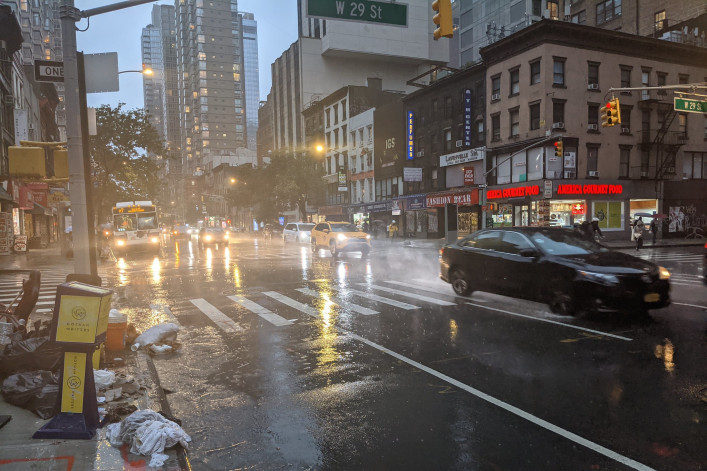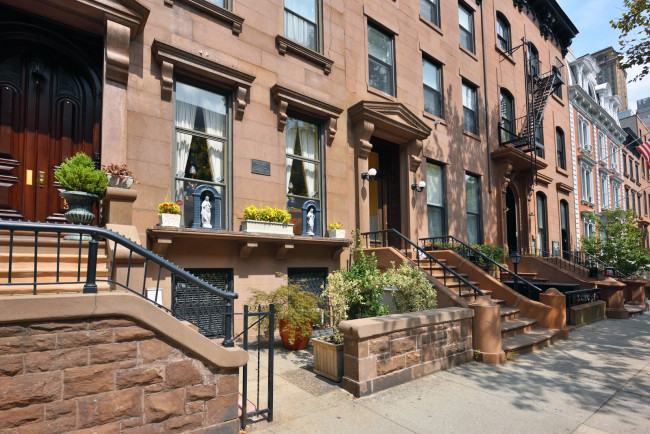Deaths in apartments flooded by Hurricane Ida highlight dangers of basement living

Hurricane Ida caused the deaths of at least 11 people who died in their basement apartments as a result of flooding or other storm-related destruction.
Hurricane Ida’s lethal path took it right inside some New Yorkers’ apartments Wednesday night.
The storm, which dumped more than half a foot of rain on Central Park in just a few hours, floated cars down city streets, halted the subway system, and submerged many basement-level and ground-floor apartments.
At least 11 people are known to have died in basement apartments as a result of flooding or other storm-related destruction. Some New Yorkers described the water rising suddenly, like a wave.
In Woodside, Queens, the storm caused a partial building collapse, trapping a family of three, including a toddler, who died in their basement apartment. Speaking to abc7, Shadia Nur, who lives nearby, says within minutes the water in her lower-level apartment was up to her waist. Unable to open the door, she escaped through a window.
An emergency alert sent out by the National Weather Service about flash flooding in NYC, the first ever issued for the city, warned against travel, but New Yorkers Brick talked to felt “blindsided” by the flooding, especially the waters that overwhelmed houses and buildings. Ida broke the record for rainfall in Central Park set just 11 days before by Hurricane Henri.
Social media was filled late Wednesday and into Thursday with posts about kitchens with chest-deep water, potholes in yards, and collapsed patios around NYC.
“There was a lot of warning for Henri but I don't think anyone expected the massive flooding. It reminded me of Hurricane Sandy,” says Brick contributor Alanna Schubach, who ran out during the storm to move her car to higher ground in Prospect Heights after seeing flooding videos on Twitter. Her car was totaled by floodwaters during Sandy. "I wasn't about to let that happen again," she says.
The dangers of illegal basement apartments
New York City’s Department of Buildings has an annual safety campaign to raise awareness of the dangers of illegal basement apartments.
“Regardless of the weather, living in an illegal basement apartment poses serious safety risks to the safety of tenants, neighbors, and to the city’s first responders as well,” says Andrew Rudansky, press secretary for the Department of Buildings.
Illegal basement and cellar apartments can have a number of life-safety and quality of life issues associated with them. Wednesday night's storm illustrates what is probably the most deadly—a lack of adequate means of escape in the event of a fire, flood, or other emergency. A fatal fire in an illegal apartment occurred this week.
The storm’s devastation may mean that legalizing basement apartments, once seen as a solution to the city’s housing crunch, gets renewed attention for safety reasons. It’s estimated that 114,000 New Yorkers live in basement apartments, which leave a great many at risk during flooding.
Two years ago a pilot program was launched in Brooklyn to make it easier to create legal apartments in the basements and cellars of qualifying one- and two-family homes. Eight homeowners have filed basement conversion plans with the Department of Buildings under the program but the $11 million budget set aside to make basement apartments safer has faced cuts. Originally the plan was to learn from a pilot program in East New York to see if it can be expanded to the rest of the city.
The latest policy paper from Citizens Housing and Planning Council recognizes that many of New York City’s basement and cellar apartments are rented in what it calls “the gray market.” It’s expensive to upgrade basement spaces and there are lots of regulations that need to be met. These are factors that keep basements as an informal type of housing that “jeopardizes the safety and security of both tenants and homeowners, empowering neither with leasehold rights, and allows for unsafe living conditions,” the paper says.
The non-profit suggests streamlining a pathway for the conversion of basements into safe, legal apartments would make these living arrangements safer for residents as well as increase the affordable housing supply.




























